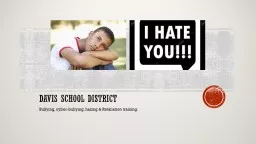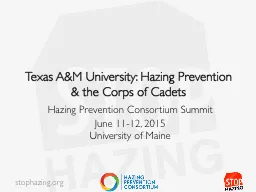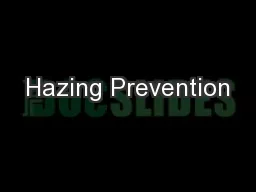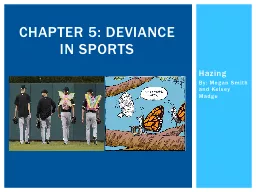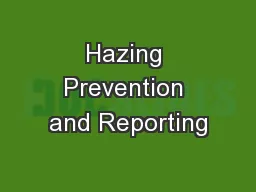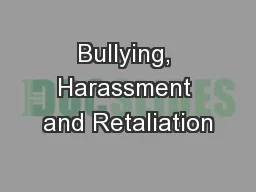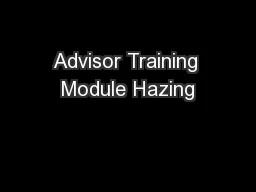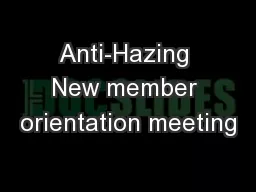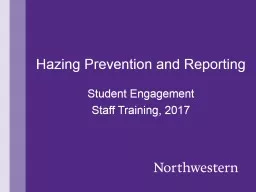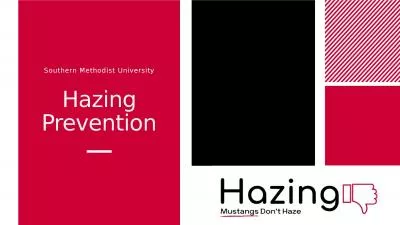PPT-Davis School District Bullying, cyber-bullying, hazing & Retaliation training.
Author : alida-meadow | Published Date : 2018-11-09
What is bullying Bullying is unwanted aggressive behavior among school aged children that involves a real or perceived power imbalance The behavior is repeated or
Presentation Embed Code
Download Presentation
Download Presentation The PPT/PDF document "Davis School District Bullying, cyber-bu..." is the property of its rightful owner. Permission is granted to download and print the materials on this website for personal, non-commercial use only, and to display it on your personal computer provided you do not modify the materials and that you retain all copyright notices contained in the materials. By downloading content from our website, you accept the terms of this agreement.
Davis School District Bullying, cyber-bullying, hazing & Retaliation training.: Transcript
Download Rules Of Document
"Davis School District Bullying, cyber-bullying, hazing & Retaliation training."The content belongs to its owner. You may download and print it for personal use, without modification, and keep all copyright notices. By downloading, you agree to these terms.
Related Documents

